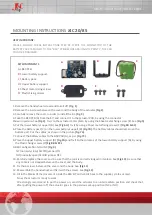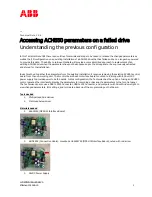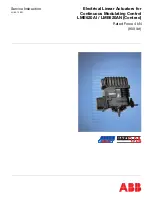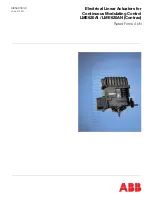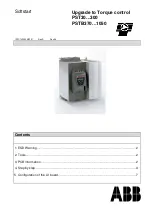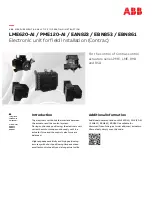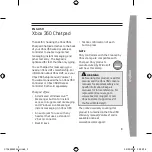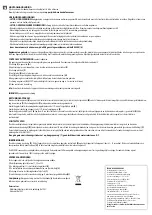
VLT
®
2800 Series
that are specific to the Process Regulator are
parameter 437 to parameter 444.
■
PID functions
Unit of reference/feedback
When
Speed regulation, closed loop
is selected
in parameter 100
Configuration
the unit of
reference/feedback is always rpm.
When
Process regulation, closed loop
is selected
in parameter 100
Configuration
the unit is defined
in parameter 416
Process units.
Feedback
A feedback range must be preset for both regulators.
At the same time this feedback range limits the
potential reference range so that if the sum of all
references lies outside the feedback range, the
reference will be limited to lie within the feedback range.
The feedback signal must be connected to a
terminal on the frequency converter. If feedback
is selected on two terminals simultaneously, the
two signals will be added together.
Use the overview below to determine which
terminal is to be used and which parameters
are to be programmed.
Feedback type
Terminal
Parameters
Pulse
33
307, 327
Voltage
53
308, 309, 310
Current
60
314, 315, 316
A correction can be made for loss of voltage
in long signal cables when a transmitter with a
voltage output is used. This is done in parameter
group 300
Min./Max scaling
.
Parameters 414/415
Minimum/Maximum feedback
must also be preset to a value in the process unit
corresponding to the minimum and maximum scaling
values for signals that are connected to the terminal.
Reference
In parameter 205
Maximum reference, Ref
MAX
it is
possible to preset a maximum reference that scales
the sum of all references, i.e. the resulting reference.
The minimum reference in parameter 204 is
an expression of the minimum value that the
resulting reference can assume.
All references will be added together and the sum
will be the reference against which regulation will
take place. It is possible to limit the reference range
to a range that is smaller than the feedback range.
This can be an advantage if you want to avoid
an unintentional change to an external reference
making the sum of the references move too far
away from the optimal reference. The reference
range cannot exceed the feedback range.
If preset references are desired, they are preset
in parameters 215 to 218
Preset reference
.
See description
Reference Function
and
Handling of References
.
If a current signal is used as the feedback signal,
it will only be possible to use voltage as an
analogue reference. Use the overview below to
determine which terminal is to be used and which
parameters are to be programmed.
Reference type
Terminal
Parameters
Pulse
33
307, 327
Voltage
53
308, 309, 310
Current
60
314, 315, 316
Preset
references
215-218
Bus reference
68+69
Note that the bus reference can only be preset
via serial communication.
NB!:
It is best to preset terminals that are not
being used to
No function
[0].
Differentiator gain limit
If very rapid variations occur in an application in
either the reference signal or the feedback signal,
the deviation between the reference/setpoint and
the process
’
s actual mode will change quickly. The
differentiator can then become too dominant. This
is because it is reacting to the deviation between
the reference and the process
’
s actual mode,
and the quicker the variance changes the more
powerful the differentiator
’
s frequency contribution
becomes. The differentiator
’
s frequency contribution
can therefore be limited in such a way that both
a reasonable differentiation time for slow changes
and an appropriate frequency contribution for quick
changes can be preset. This is done using the speed
regulation in parameter 420
Speed PID Differentiator
gain limit
and Process regulation in parameter 443
Process PID Differentiator gain limit
.
✭
= factory setting. () = display text [] = value for use in communication via serial communication port
MG.28.E9.02 - VLT is a registered Danfoss trademark
100































